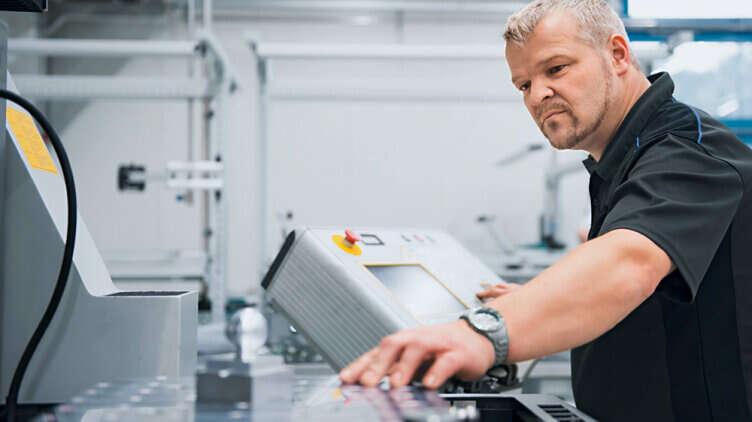Machine Safety Market Development Impacted by Integration Challenges and Remote Monitoring Demand

The machine safety market has witnessed substantial growth over the past few years, driven by increasing industrial automation, stringent regulatory mandates, and the rising need to safeguard human lives and equipment. As industries continue to adopt smart manufacturing processes and integrate digital technologies, the demand for machine safety systems—such as safety sensors, interlock switches, safety controllers, and emergency stop devices—is escalating. However, several key factors are impacting the growth and evolution of this market.
1. Regulatory Standards and Compliance Requirements
One of the most significant driving factors in the machine safety market is the growing emphasis on regulatory compliance. Governments and international bodies have implemented strict safety regulations to protect workers in high-risk environments. Standards such as ISO 13849, IEC 62061, OSHA regulations in the U.S., and the EU’s Machinery Directive 2006/42/EC mandate specific safety mechanisms to reduce workplace hazards.
Companies are under pressure to meet these standards not just to avoid legal consequences but to uphold their reputation and minimize potential operational disruptions due to workplace incidents. This regulatory environment compels businesses to invest in advanced machine safety solutions, directly impacting market growth.
2. Industrial Automation and Smart Manufacturing
The rise of Industry 4.0 and the digital transformation of manufacturing facilities have accelerated the adoption of automated systems. Smart factories leverage robotics, machine learning, IoT, and real-time monitoring systems to optimize performance and reduce human intervention.
However, increased automation also brings more complex safety challenges. As machines become more autonomous, the risk of accidents due to system errors or misconfigurations grows. This dynamic has led to increased investments in sophisticated safety systems that can detect anomalies, prevent unsafe operations, and facilitate emergency shutdowns.
3. Technological Advancements in Safety Systems
The evolution of sensor technologies, wireless communication, and AI-driven safety diagnostics has had a profound impact on the machine safety market. Modern safety components are more efficient, reliable, and easier to integrate into existing production environments.
For instance, programmable safety controllers offer flexibility and scalability for complex machinery setups, while non-contact safety switches enable minimal wear and longer operational life. These advancements not only improve safety outcomes but also enhance overall productivity, making them an attractive investment for manufacturers.
4. Rising Workplace Safety Awareness
There is a growing awareness among industries about the importance of occupational health and safety. Companies are increasingly recognizing the financial and ethical implications of workplace accidents, which can lead to litigation, compensation claims, production downtime, and loss of employee trust.
In response, many businesses are adopting a proactive safety culture, going beyond compliance to ensure employee well-being. This cultural shift further fuels the demand for reliable machine safety systems as integral components of enterprise risk management.
5. Cost Constraints in Emerging Economies
While developed countries are embracing advanced safety systems at a rapid pace, cost sensitivity remains a significant barrier in emerging markets. Small and medium-sized enterprises (SMEs) often face challenges in justifying the upfront costs of machine safety integration, especially when their profit margins are thin.
Nonetheless, growing international collaborations, government incentives, and awareness campaigns are gradually addressing this issue, promoting safer working environments across all regions.
6. Impact of COVID-19 and Remote Monitoring Needs
The COVID-19 pandemic highlighted the importance of remote operations and contactless safety systems. As industries adapted to new safety protocols and reduced on-site workforce presence, there was a shift toward machine safety solutions that offer remote diagnostics, cloud-based control, and predictive maintenance.
This trend is likely to continue as organizations invest in future-ready safety systems that support operational continuity during crises or labor shortages.
7. Integration Challenges and System Complexity
Despite the advantages, integrating machine safety systems into older machinery or legacy infrastructure can be complex and costly. Compatibility issues, lack of skilled professionals, and the risk of production disruption during retrofitting are common concerns.
To address these challenges, vendors are developing modular safety solutions and offering integration support services, which can help streamline deployment and enhance user confidence in adopting new technologies.
Conclusion
The machine safety market is shaped by a blend of regulatory, technological, economic, and social factors. As industries continue to digitize and prioritize safety, the market is expected to see steady growth. Addressing integration challenges, bridging the cost gap for SMEs, and keeping pace with emerging technologies will be crucial for sustaining this momentum.
- Art
- Causes
- Crafts
- Dance
- Drinks
- Film
- Fitness
- Food
- Jogos
- Gardening
- Health
- Início
- Literature
- Music
- Networking
- Outro
- Party
- Religion
- Shopping
- Sports
- Theater
- Wellness


